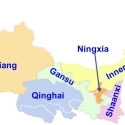19 Jun 2015
An Introduction to Guizhou Province
Guizhou province, as the major part of the Yunnan-Guizhou Plateau, is located between 24037′- 29013′N and 103036′- 109035′E. Hunan province lies to its east, to its south is Guangxi province, Yunnan province along its western border, and to its north is Sichuan province and Chongqing municipality. Guizhou has an area of 176,167 sq. km and a population of 35.1 million in 2014, including Han nationality and the other 48 minorities, such as Miao, Buyi, Ton, Tujia, Yi, Hui, Bai, and so on.
Climate
Located in the subtropical humid monsoon zone, Guizhou enjoys a warm and humid climate with cool summers and mild winters. In most of the regions, the annual precipitation ranges from 1100 to 1300 mm and basically concentrates from April to September (>75%). The annual average temperatures are 14℃-18℃, with the lows of 3℃-6℃ in January and highs of 22℃-25℃ in July, a typical region with cool summer. The solar radiation is around 1200-1600 hours annually and the frost-free days are recorded as 270 days.
Agriculture
The major crops are rice, corn, wheat, sorghum, soybean, potato, tobacco, tea, mulberry, sugarcane, rapeseed, flax, vegetables and fruits. The most common cropping systems are rice-rapeseed/wheat and corn-rapeseed/wheat. In 2014, the cultivated grain crops accounted for 3.14 million ha, oil crops 0.58 million ha and tea 0.37 million ha.
Fertilizer consumption
In 2011, the total fertilizer (nutrient) consumption was 941,000 t, among which N accounted for 509, 000 t, P2O5 109,000 t, K2O 79,000 t and compound fertilizer 244,000 t. This gives a N:P2O5:K2O:compound ratio of 1:0.21:0.16:0.48, indicating a modest improvement in balanced fertilizer use but a further rise of P and K consumption is needed in future. The sowing area was 5.94 million ha, which gives an average fertilizer rate of 158 kg/ha of sowing area, still low among the provinces in China.


